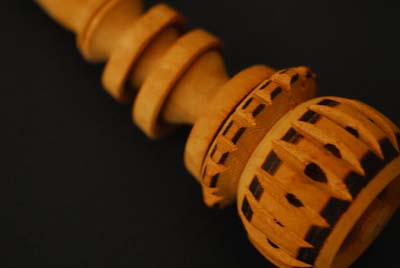 Editor's note: I've been travelling through Oregon celebrating Christmas with my two favorite Homesick Texans—my dad and my brother—so I haven't had much time to blog. Here is something I wrote that first appeared on The Cook's Kitchen. Yeah, yeah, I know...I'm being lazy! I promise many fresh and exciting posts very, very soon!
Editor's note: I've been travelling through Oregon celebrating Christmas with my two favorite Homesick Texans—my dad and my brother—so I haven't had much time to blog. Here is something I wrote that first appeared on The Cook's Kitchen. Yeah, yeah, I know...I'm being lazy! I promise many fresh and exciting posts very, very soon! Growing up, visits to San Antonio were always a cause for celebration. Sure, the River Walk was lovely and the Alamo was historic, but my favorite part of the trip was breakfast at Mi Tierra. Mi Tierra is one of those legendary Tex-Mex restaurants, up there with Joe T. Garcia and Ninfa's as places Homesick Texans will wax nostalgic. This landmark housed in the old San Antonio market is festive, decked out year-round with Christmas lights, bright paintings and a big heart, not to mention the tasty food. And it's always open, so at whatever hour you need your Tex-Mex fix, it will be waiting for you with open arms. My family used to go for breakfast, and one of its signatures for me was the Mexican hot chocolate. A silky, spicy concoction spiked with cinnamon and vanilla. After you've had it, you'll never go back to Swiss Miss again.
You would expect Mexicans to make amazing hot chocolate since it was the Mayans and the Aztecs that created the beverage from the native American cacao beans. It wasn’t until Cortez brought chocolate back to Europe, however, that it evolved into the sweet, milky beverage we enjoy today. Both the Mayans and the Aztecs served their chocolate cold, mixed with chiles, vanilla and cinnamon. But when Cortez introduced the beverage to Spain, they did away with the spices, added sugar and served it hot.
Modern Mexican hot chocolate is a hybrid of both the ancient and the new—a warm, sweet beverage that’s also spicy. But besides the flavor, the key characteristic of Mexican hot chocolate is that froth, the cup’s life force. And the tool used to achieve these foamy peaks is a molinillo.
The molinillo, which translates to blender, is a beautiful wooden tool; even the so-called simple ones are ornately carved. It’s a piece of pragmatic kitchen art that not only whips up a fantastic froth on your chocolate, but is also guaranteed to solicit queries from those unfamiliar with it.
I’ve read conflicting reports on its invention, some say it was the Spanish who invented it in the 1700s (basing it on a similar French tool called a moulinet ) while others say the Mayans created it. No matter, it’s here with us today and that’s what counts.
To use it is very simple. After making your pot of chocolate, you take the molinillo, place it between both palms and vigorously roll it back and forth. The rings on the bottom of the molinillo twirl around whipping the beverage into a foam. And if you like to chant while you cook, here’s the molinillo rhyme popular with Mexican children and kindergarten teachers everywhere:
Bate, bate, chocolate,
tu nariz de cacahuate.
Uno, dos, tres, CHO!
Uno, dos, tres, CO!
Uno, dos, tres, LA!
Uno, dos, tres, TE!
Chocolate, chocolate!
Bate, bate, chocolate!
Bate, bate, bate, bate,
Bate, bate, CHOCOLATE!
You can buy a molinillo at any Mexican specialty shop and some cookware stores, and they are also sold on Amazon. And a molinillo with a pack of Mexican chocolate makes a terrific gift.

While Mexican hot chocolate may seem exotic, making it is not difficult. Most stores sell Mexican hot chocolate discs, either under the brand Ibarra or Abuelita. Take one of the discs (a pressed mixture of sweetened cacao nibs and cinnamon), crush it in a pot with the molinillo, pour in four cups of milk, and slowly simmer stirring occasionally until the chocolate has melted. You can add some ancho powder and vanilla if you want to give it an extra kick. When completely melted, put the molinillo in the pot and spin it between your hands for a few minutes until it’s good and frothy. Pour it into cups and enjoy. And don’t forget to savor the soul of the drink—a spiritual experience all can enjoy.
- Follow RecipesDream
- Follow @us
